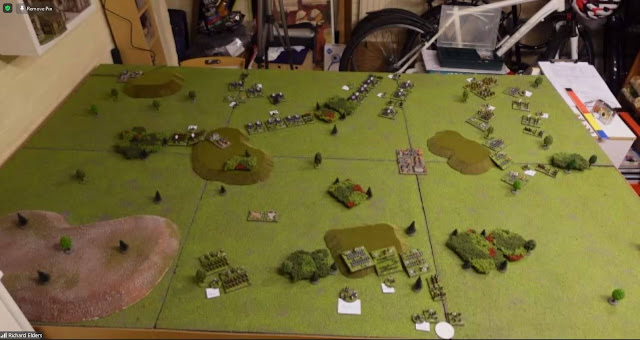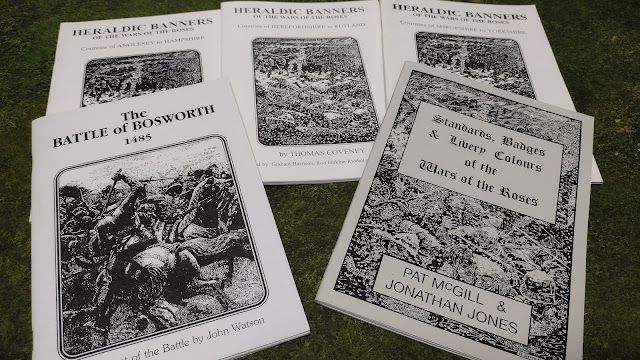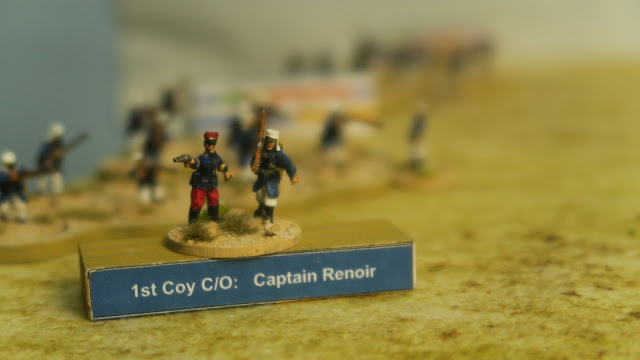Over the last three weeks, Posties Rejects have been taking part in a remote game with Jonathan Freitag (of
Palouse Wargaming Journal fame) over in Washington State in the US. With Zoom as our medium of choice, we had seven players join Jonathan over three weekly sessions to play a huge battle, representing just part of the Solferino battlefield. I had the privilege to command the Austrians with Steve and John as my co-generals. Ray, Richard Surjit, and Dave played the French.
All the pictures are from Jonathan and are used with his kind permission. I expect he took a few more reference pictures so keep an eye peeled for his own review of the game which will no doubt appear on his blog in due course. I had planned on taking a few pictures myself but the game was so intense and required so much attention the time shot past and I didn't take a single picture or screenshot! A testament I think to how good the game was.
The Battle of Solferino was the largest European battle since the Battle of Leipzig in 1813 so unsurprisingly Jon has broken the battle down into sectors. A few months ago we played the eastern sector and for this series of games, we were focused on the Center Sector. I'll let Jon describe the situation in his own words, taken verbatim from our pre-battle briefing:
"The Austrians, having planned to advance against the French and Sardinians to the west were surprised when the Allies jumped into action and stole a march on the Austrian Army. Having been caught off-balance, the Austrian 2nd Army primarily took up a defensive attitude around Solferino and San Cassiano. The Austrian 1st Army, with more maneuver room on the Medole Plain attempted to take the offensive. Even though the French were initially outnumbered on the plain, uncoordinated attacks by the Austrians allowed the French to fight the enemy to a standstill.
The primary avenue of attack for the French was along the spine of the Solferino Heights. As the French 1st Corps attacked along the spline to the north (North Sector) and the French 4th Corp battled the Austrian 1st Army in the south (South Sector), MacMahon’s 2nd Corps remained idle, sandwiched between these to battles (Center Sector). If he turned north to aid in the attack against Solferino, he risked being flanked by the Austrian 1st Army in the South Sector. If he turned against the Austrian 1st Army to the south, he risked being attacked in the flank by the Austrian I Corps.
Finally, about noon, with reinforcements arriving on the battlefield, MacMahon and the French 2nd Corps finally began moving off to engage the enemy at San Cassiano and Cavriana. MacMahon needed to engage the Austrians in the Center Sector so that I Corps could neither reinforce the battles raging on the Solferino Heights in the north nor the battles on the Medole Plain around Guidizzolo in the south.
The French goal in the Center Sector is to pin the Austrian I Corps and prevent it from reinforcing either North or South Sectors. Defeating this Corps in detail will strengthen the odds of taking the difficult heights to the north. Speed is of the essence!"
As the Austrian commander, my Commands goal was to hold the centre while pinning the French 2nd Corps allowing the 1st Army in the south to overpower the French forces opposing it. We were tasked with defending the heights to the south of Solferino, holding our ground as long as possible. If we could hold San Cassiano and Cavriana until Turn 8, we would have bettered history but only if we manage to do so without breaking our Corps in the process. So we had to fight hard but also protect our fighting integrity which we quickly realised was no small task!
At this point, I need to make an apology. I would like to go into a blow-by-blow account of the action but to be honest, the intensity of the game meant that whilst we were all engaged in detailed action I didn't have time to make the sort of detailed notes that I would have liked. Instead, I'll try to discuss the game in terms of the Acts, representing the three sessions in which we fought this battle. Each game had a different 'flavour' and together tell a dramatic and nail-biting story of victory & defeat!
Game One - 26th September 2022
Having spent the previous week pouring over the pre-game briefing - during which each side had gathered via zoom for strategy meetings - the evening of the first game started early. It was especially early for our host Jonathan (based as he is in Washington State in the US) but also early for us as we kicked off at 6pm meaning we call rushed back from work and grabbed a hurried bite to eat before the game started.

From the Austrian perspective, we had had our strategy session a few days earlier, had divided our forces between us and agreed on a simple plan. We would defend the heights, including a string of villages and towns, as staunchly as we could, until it was clear what the French plan was. I took the lead Division and expected to face the first attack by the enemy. However we were not expecting the French to attack as quickly or in the numbers, we encountered so early in the game. The rest of their army would have a long arcing route march to engage our army and we expected them to soften us up with artillery before coming in simultaneously from all sides. Instead, they very quickly commenced an attack on the heights defended by one of my Brigades under Major General Hoditz.
Within a couple of turns, my position here was being seriously contested by French regiments trying to use superior numbers and brute force to push my Brigade out of the defended villages in the heights above them. On paper, they had the advantage and one particular attack resulted in 12 french attack dice being arranged against three Austrian dice. The French, fighting uphill, rolled poorly and the Austrians rolled well. This resulted in morale checks for each 'hit' and here my position worked for me. When the dust settled my defenders had escaped unscathed and thrown back the French attack. Cue much moaning and gnashing of teeth by the French commanders who just couldn't believe their blunt force attack had failed. It seems lady luck was Austrian this evening.
Meanwhile a huge body of French guns, infantry and cavalry has begun to advance down the other side of the battlefield. And boy did they have a lot of guns! But in this first session, it began to feel as if the French had too much because they were getting in each other's way and tieing themselves in knots keeping fields of fire open for their big guns. Brigades were already starting to become intermingled and to the Austrian players, it looked like the french were tripping over their own shoelaces!
Austrian co-commander Steve had meanwhile set up his brigades in our centre but had also put in place an important backstop position behind my Division in case it had to fall back. Defence in Depth was the order of the day for us and the French would have to cut their way through a lot of angry Austrians to achieve their objectives. Steve had also managed to deploy his artillery with a wide field of fire and, from turn one, had started to bombard the advancing mass of Frenchmen. Third Austrian commander John had similarly deployed our reserve artillery and his cavalry pointing down the length of the battlefield waiting for the French to expose their flank as they swung into our positions on the heights.
At the end of the first session, our Austrians were still firmly in control of the heights having stubbornly resisted several French assaults. My Divison was taking the most damaged at this point, but considering we had managed to hold our ground, and dealt a lot of damage to the French, we felt confident going into the second session a week later.
Game Two - 3rd October
It was clear from the start that the French had had a serious planning session following the first days gaming. They began attacking in a much more coordinated fashion and Ray's infantry was starting to advance towards Steve's units in the centre.
My Divison's of Hodiz and & Reznicek started to take more casualties as the french clawed a foothold on the heights and began pushing me back. Fortunately, we had seen this threat in the first game and decided to move Steve's Brigade under MG Paszthory to form a rear line of defence and they were able to add some of their firepower to support my Brigades.
Meanwhile, his other Brigade under MG Bruner, plus the artillery, had made mincemeat of at least one French infantry Brigade controlled by Ray and brought their Cavalry under Richard to the edge of breaking.
By the end of the second day of fighting the Austrian position was starting to look precarious up on the heights, and we had taken more casualties than we were comfortable with. Both sides looked battered and we all knew that the third session a week later would be crucial. It felt as if both sides were close to breaking and, despite the fact that the Austrians still held both the key towns, everything was still to play for.
Game Three - 10th October
Jon had incorporated some fog-of-war by ensuring that neither side really know how close the other was to breaking. Neither side had started with an order of battle for the enemy, and brigades on both sides had become hopelessly muddled so it was exceptionally hard to decide where to focus effort to break the enemy army. On the Austrian side, we were even confused amongst ourselves so I went through each unit and colour-coded them so we could reorganise more effectively.

Bruners Brigade (in Steve's commend,s shown in Orange) was the healthiest while those of Paszthory (in blue) were close to breaking so we pulled these back to protect them. My Division had already been broken so Hoditz and Reznicek's brigades would fight to the last man if necessary to slow the French advance. We knew the French Cavalry were close to breaking and probably needed to break another French infantry Brigade to force them to retire, but the enemy brigades were so jumbled it was going to be pot-luck if we destroyed the right units to break brigades.
Gae three thus commenced with both sides feeling that victory was in their grasp. The French continued to probe and push along the heights but made little ground due to the heroic sacrifice of the Stankovics Division (my Hoditz and Reznicek Brigades). On the plain, the french had swung around and were bearing down on the heights and Steve's positions. We gave ground slowly and every inch was paid for in French blood.
Then we saw an opportunity and our Cavalry (John's Mensdorff Division) launched forward and broke the French Cavalry in front of them. Then in the final turn of the game, our Artillery pounded the French Infantry on the Plain. By sheer luck, we targeted the right units and broke another French Brigade and with that their Army.
The victory was Austrian and somehow we had managed to better history.
The Calm after the Storm
A few days later Jon sent out the final butcher bill and both sides had been brought incredibly close to breaking. The game really could have gone either way in that last session, but in the end, luck and bull-headed stubbornness were on the Austrian side. Not only had we broken the French army we had held onto both the towns in the heights meaning we had not merely prevailed but had bettered history convincingly.
Thanks must go to Jonathan for the huge effort he put into running this game for us. At a rough guess, we had somewhere around 12 hours of gameplay over the three sessions and throughout it all he was a gracious and patient host. Please take a look at
Jonathans blog and keep an eye out for his own write-up of the game which I'm sure will be both more detailed and less biased than mine!#
UPDATE:
The first two posts by Jonathan are on his blog now
.jpg)
.jpg)
























.JPG)


.JPG)
.JPG)
.JPG)
.jpg)



















